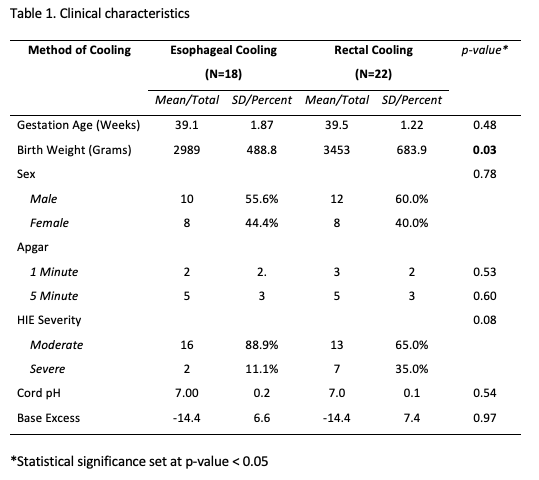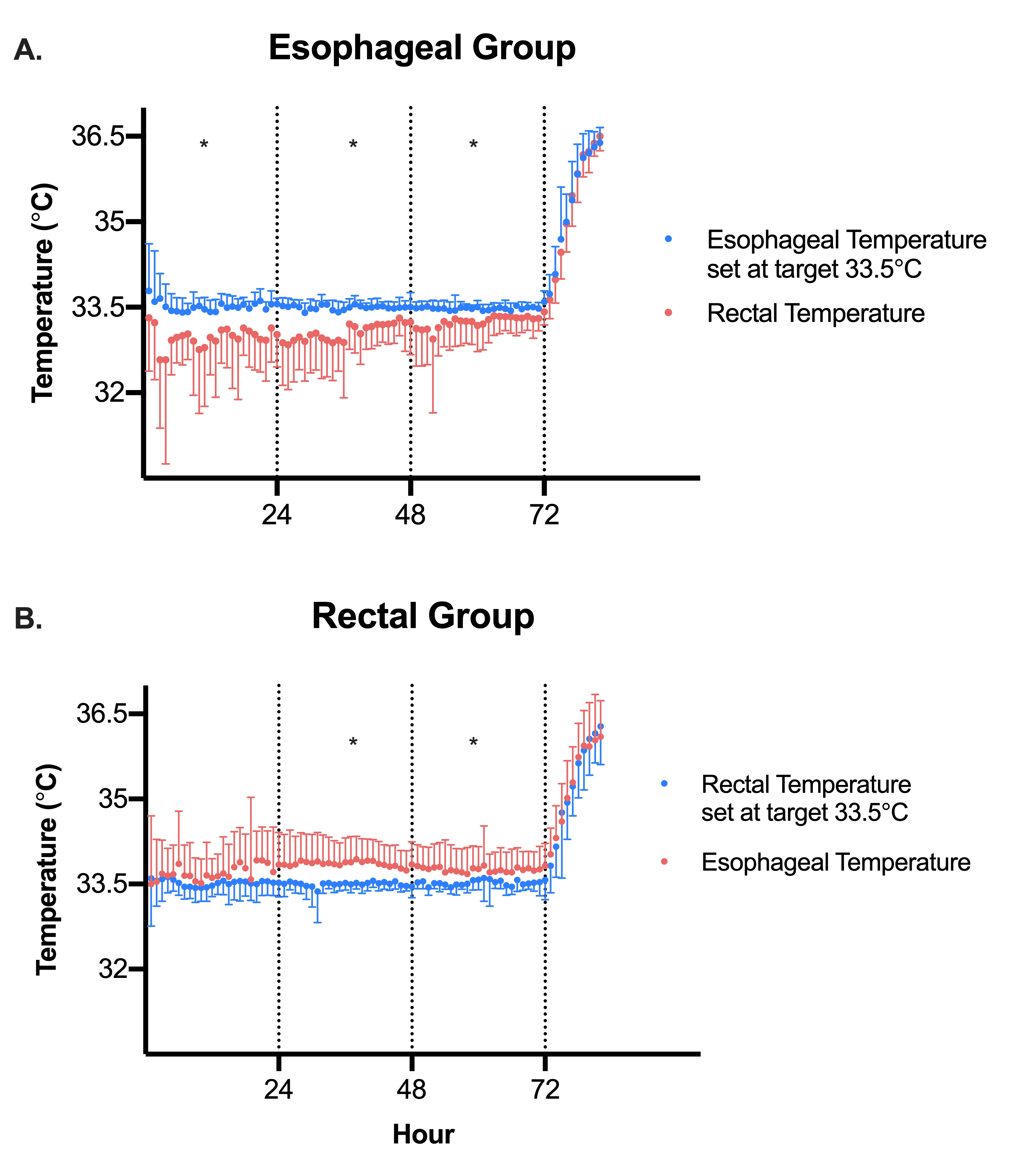Neonatal Neurology: Clinical Research
Neonatal Neurology 2: Clinical 2
163 - Differences in core body temperature of infants undergoing therapeutic hypothermia by esophageal versus rectal site
Publication Number: 163.136

Kaavya Adam, MD (he/him/his)
Resident Physician
CHLA
Orange, California, United States
Presenting Author(s)
Background:
Therapeutic hypothermia (TH) for hypoxic-ischemic encephalopathy (HIE) requires continuous monitoring of core body temperature at the esophageal or rectal site for servo-controlled cooling. Esophageal temperature better reflects arterial blood and brain temperature with a shorter lag time, while rectal temperature monitoring is simple without the need for X-ray confirmation of probe position. It is unknown how the core temperature profiles across the entire TH period compare between these two well-accepted methods of cooling.
Objective:
To compare core temperature profiles of infants undergoing TH by esophageal or rectal temperature monitoring.
Design/Methods: This was a prospective study where 38 infants with HIE underwent 72 hours of TH followed by 6 hours of rewarming. TH was performed using esophagus as the monitoring site for 18 patients (E-group) and rectum as the monitoring site for 20 patients (R-group). Simultaneous measurements of esophageal and rectal temperature were performed during TH for both groups. The esophageal probe was confirmed radiographically to be in distal third of the esophagus. Rectal probes were inserted 3-4cm deep. Data collection was hourly, until after rewarming was complete. Multiple paired t-tests were used to analyze hourly mean temperature differences during TH (divided into 4 intervals: hours 1-24, 25-48, 48-72, and 73-82). The proportion of time that the esophageal and rectal temperatures were statistically different are reported. Statistical significance was set at p< 0.01 due to multiple comparisons.
Results:
Patient characteristics were comparable between groups except for birthweight, Table 1. In the E-group, rectal temperature was found to be significantly lower than esophageal in hours 1-24 (17% of the time), 25-48 (67%), and 49-72 (20%), Figure 1A. In the R-group, esophageal temperature was significantly higher than rectal in hours 25-48 (75% of the time) and 49-72 (38%), Figure 1B. There was no difference during the rewarming phase (hours 73-82) in either group. Mean esophageal–rectal temperature gradient was positive for all hours until rewarming began in both groups, Figure 2.
Conclusion(s): During TH by rectal or esophageal route, a positive esophageal-rectal gradient is most evident on day 2. Esophageal temperature, which better reflects brain temperature, may remain above 34-34.5°C when TH is performed with rectal temperature monitoring. Further studies are needed to determine if site of core temperature monitoring during TH affects outcome. 

.jpg)
